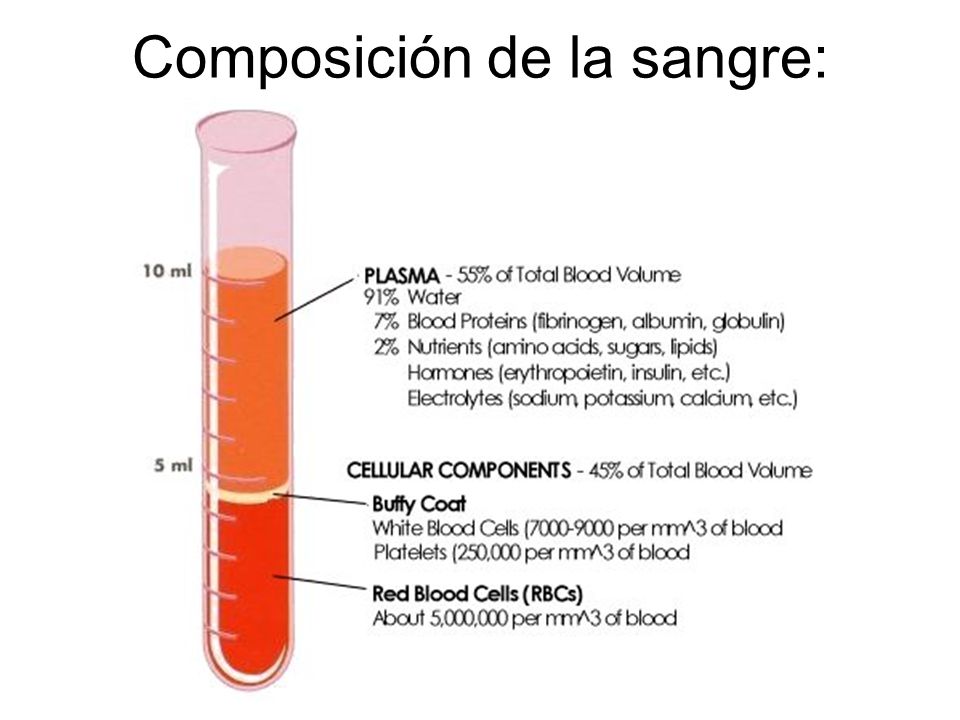Symptoms of low hematocrit levels. Understanding Low Hematocrit Levels: Symptoms, Causes, and Treatment Options
What are the symptoms of low hematocrit levels. How does hematocrit relate to hemoglobin. What causes anemia and how is it diagnosed. What are the treatment options for different types of anemia. How can anemia be prevented through dietary changes and supplements.
What is Hematocrit and How Does it Relate to Anemia?
Hematocrit (HCT) is a measure of the proportion of red blood cells in a person’s blood. It is closely related to hemoglobin (Hb), which is the protein in red blood cells that carries oxygen. Both low hematocrit and low hemoglobin are indicators of anemia, a condition where there are not enough healthy red blood cells to carry adequate oxygen to the body’s tissues.
Normal hematocrit ranges are typically:
- Men: 40-54%
- Women: 36-48%
- Children: 30-43% (varies by age)
Hematocrit levels below these ranges may indicate anemia. However, it’s important to note that anemia is not a diagnosis in itself, but rather a symptom of an underlying condition that needs to be identified and treated.

Common Symptoms of Low Hematocrit and Anemia
When hematocrit levels drop, individuals may experience a range of symptoms due to decreased oxygen delivery to tissues. Common symptoms include:
- Fatigue and weakness
- Shortness of breath, especially during physical activity
- Dizziness or lightheadedness
- Pale or yellowish skin
- Irregular heartbeats
- Cold hands and feet
- Chest pain
The severity of symptoms often correlates with the degree of anemia. Mild anemia may cause minimal symptoms, while severe anemia can lead to significant health complications.
When do anemia symptoms typically appear?
Most patients begin to experience noticeable symptoms when their hemoglobin drops below 7.0 g/dL. However, the onset of symptoms can vary depending on how quickly the anemia develops and whether the individual has other health conditions, particularly cardiovascular disease.
Types of Anemia and Their Causes
Anemia can be classified into several types based on the size of the red blood cells (measured by mean corpuscular volume or MCV) and the body’s ability to produce new red blood cells (measured by reticulocyte count). Understanding these classifications is crucial for proper diagnosis and treatment.

Hypoproliferative Anemias
These types of anemia are characterized by inadequate production of red blood cells, indicated by a corrected reticulocyte count of less than 2%. They are further subdivided based on MCV:
- Microcytic Anemia (MCV < 80 fL)
- Iron deficiency anemia
- Anemia of chronic disease
- Thalassemia
- Lead poisoning
- Normocytic Anemia (MCV 80-100 fL)
- Anemia of chronic disease
- Renal failure
- Aplastic anemia
- Macrocytic Anemia (MCV > 100 fL)
- Vitamin B12 or folate deficiency
- Liver disease
- Myelodysplastic syndrome
Hyperproliferative Anemias
These types of anemia are characterized by increased production of red blood cells, indicated by a corrected reticulocyte count greater than 2%. The most common type in this category is hemolytic anemia, where red blood cells are destroyed faster than they can be replaced.
Diagnostic Approach to Anemia
Diagnosing the specific type and cause of anemia involves several steps:
- Complete Blood Count (CBC): This test measures hematocrit, hemoglobin, and other blood cell parameters.
- Peripheral Blood Smear: This microscopic examination of blood cells can reveal abnormalities in size, shape, or color.
- Reticulocyte Count: This test measures the number of young red blood cells, indicating the bone marrow’s response to anemia.
- Iron Studies: These tests measure iron levels, iron-binding capacity, and ferritin to assess iron status.
- Vitamin B12 and Folate Levels: These tests check for deficiencies that can cause macrocytic anemia.
- Additional Tests: Depending on the suspected cause, further tests may include hemoglobin electrophoresis, bone marrow biopsy, or genetic testing.
Treatment Options for Different Types of Anemia
The treatment of anemia depends on its underlying cause. Here are some common approaches:
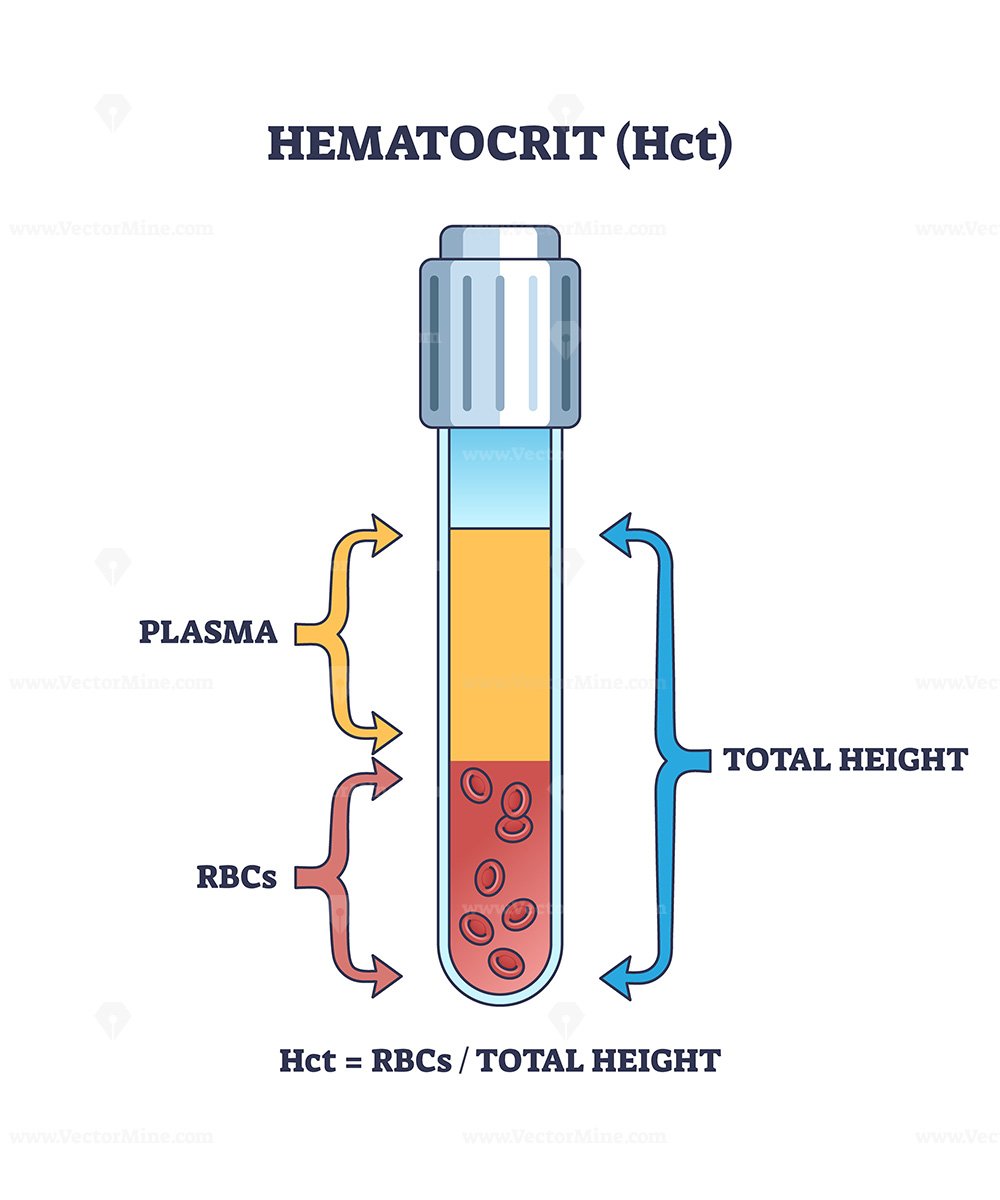
Iron Deficiency Anemia
Treatment typically involves iron supplementation, either orally or intravenously. Dietary changes to increase iron intake may also be recommended.
Vitamin B12 or Folate Deficiency Anemia
Treatment includes vitamin B12 injections or high-dose oral supplements for B12 deficiency, and folic acid supplements for folate deficiency.
Anemia of Chronic Disease
The primary focus is on treating the underlying condition. In some cases, erythropoiesis-stimulating agents may be used to boost red blood cell production.
Hemolytic Anemia
Treatment depends on the specific cause and may include medications to suppress the immune system, removal of the spleen, or avoidance of triggering factors.
Aplastic Anemia
Severe cases may require bone marrow transplantation. Other treatments include immunosuppressive therapy and blood transfusions.
The Role of Erythropoietin in Anemia
Erythropoietin (EPO) is a hormone produced primarily by the kidneys that plays a crucial role in red blood cell production. Understanding EPO levels can provide insights into the underlying cause of anemia:
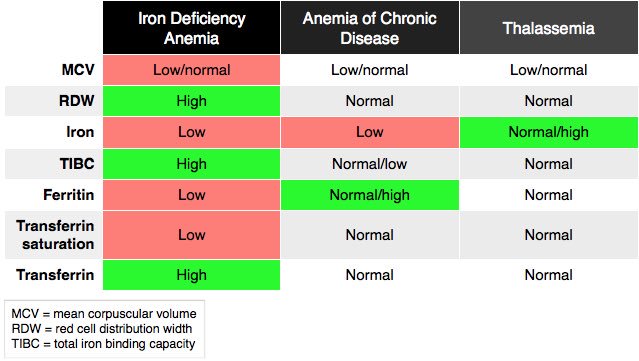
- In most cases of anemia, EPO levels are elevated as the body attempts to compensate for low oxygen levels.
- In anemia due to kidney disease, EPO levels are typically lower than expected, reflecting the kidney’s reduced ability to produce this hormone.
- In anemia of chronic disease, EPO levels are often elevated but not as high as they should be, indicating a relative EPO deficiency.
EPO levels can be measured through blood tests and may guide treatment decisions, particularly in cases where EPO replacement therapy is considered.
Preventing Anemia Through Diet and Supplements
While not all types of anemia can be prevented through dietary measures, maintaining a balanced diet rich in key nutrients can help reduce the risk of nutritional anemias:
Iron-Rich Foods
Include foods such as lean red meat, poultry, fish, beans, lentils, tofu, and fortified cereals in your diet. Pairing iron-rich foods with vitamin C sources can enhance iron absorption.
Vitamin B12 Sources
Incorporate foods like meat, fish, eggs, and dairy products. Vegetarians and vegans may need to rely on fortified foods or supplements.
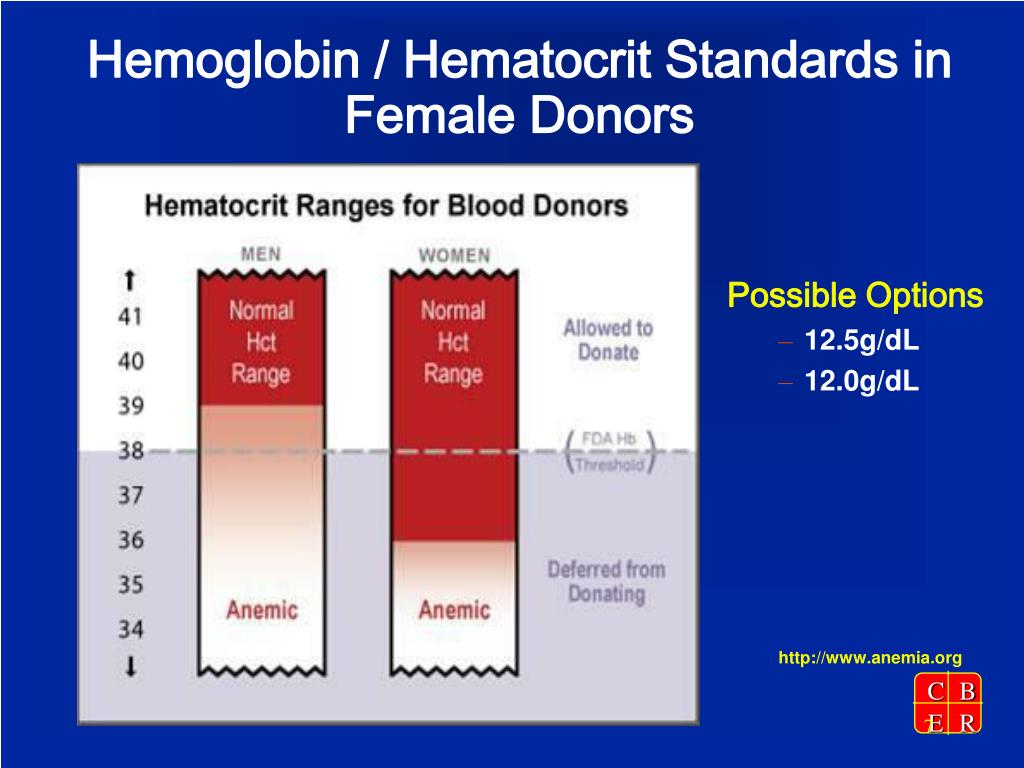
Folate-Rich Foods
Consume plenty of leafy green vegetables, citrus fruits, beans, and fortified grain products.
Supplements
In some cases, dietary changes alone may not be sufficient, and supplements may be recommended:
- Iron supplements: These should only be taken under medical supervision, as excess iron can be harmful.
- Vitamin B12 supplements: These are often recommended for vegetarians, vegans, and older adults who may have difficulty absorbing B12 from food.
- Folic acid supplements: These are particularly important for women of childbearing age to prevent neural tube defects in potential pregnancies.
It’s important to consult with a healthcare provider before starting any supplement regimen, as excessive intake of certain nutrients can have adverse effects.
Special Considerations for Anemia in Different Populations
The prevalence and management of anemia can vary significantly among different demographic groups:
Anemia in Pregnancy
Pregnant women are at higher risk of developing anemia due to increased blood volume and the demands of the growing fetus. Regular screening and appropriate supplementation are crucial during prenatal care.

Anemia in the Elderly
Older adults are more susceptible to anemia due to various factors including chronic diseases, nutritional deficiencies, and age-related changes in bone marrow function. Anemia in this population can significantly impact quality of life and increase the risk of falls and cognitive decline.
Anemia in Children
Children, especially in developing countries, are at risk of anemia due to nutritional deficiencies and parasitic infections. Iron deficiency anemia in early childhood can have long-term effects on cognitive and physical development.
Understanding these population-specific considerations is crucial for healthcare providers in developing appropriate screening and treatment strategies.
In conclusion, low hematocrit levels and anemia are common health concerns that can significantly impact an individual’s quality of life. By understanding the various types, causes, and treatment options for anemia, healthcare providers can better diagnose and manage this condition. Additionally, individuals can take proactive steps through diet and lifestyle choices to reduce their risk of developing certain types of anemia. Regular health check-ups and prompt attention to symptoms can lead to early detection and more effective treatment of anemia.
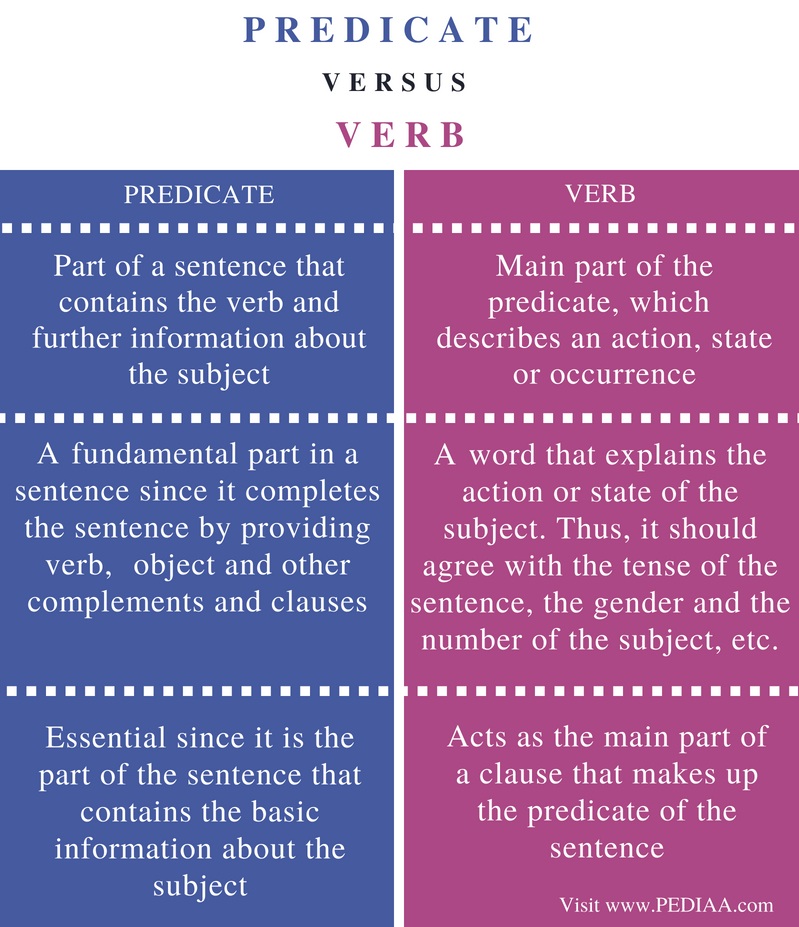
Anemia – StatPearls – NCBI Bookshelf
Continuing Education Activity
Anemia is a reduction in hemoglobin (Hb) or hematocrit (HCT) or RBC count. It is a presentation of an underlying condition and can be subdivided into macrocytic, microcytic, or normocytic. Patients with anemia typically present with vague symptoms such as lethargy, weakness, and tiredness. Severe anemia may present with syncope, shortness of breath, and reduced exercise tolerance. This activity outlines the evaluation and treatment of anemia and explains the role of the interprofessional team in managing patients with this condition.
Objectives:
Summarize the etiology of anemia.
Describe the pathophysiology of anemia.
Outline the use of dietary supplements in the treatment of anemia.
Explain the importance of collaboration and communication among the interprofessional team to improve outcomes for patients affected by anemia.
Access free multiple choice questions on this topic.
Introduction
Anemia is described as a reduction in the proportion of the red blood cells. Anemia is not a diagnosis, but a presentation of an underlying condition. Whether or not a patient becomes symptomatic depends on the etiology of anemia, the acuity of onset, and the presence of other comorbidities, especially the presence of cardiovascular disease. Most patients experience some symptoms related to anemia when the hemoglobin drops below 7.0 g/dL.
Erythropoietin (EPO), which is made in the kidney, is the major stimulator of red blood cell (RBC) production. Tissue hypoxia is the major stimulator of EPO production, and levels of EPO are generally inversely proportional to the hemoglobin concentration. In other words, an individual who is anemic with low hemoglobin has elevated levels of EPO. However, levels of EPO are lower than expected in anemic patients with renal failure. In anemia of chronic disease (AOCD), EPO levels are generally elevated, but not as high as they should be, demonstrating a relative deficiency of EPO.
Normal Hemoglobin (Hgb)-specific laboratory cut-offs will differ slightly, but in general, the normal ranges are as follows:
13.5 to 18.0 g/dL in men
12.0 to 15.0 g/dL in women
11.0 to 16.0 g/dL in children
Varied in pregnancy depending on the trimester, but generally greater than 10.0 g/dL
Etiology
The etiology of anemia depends on whether the anemia is hypoproliferative (i.e., corrected reticulocyte count <2%) or hyperproliferative (i.e., corrected reticulocyte count >2%).
Hypoproliferative anemias are further divided by the mean corpuscular volume into microcytic anemia (MCV<80 fl), normocytic anemia (MCV 80-100 fl), and macrocytic anemia (MCV>100 fl).
1) Hypoproliferative Microcytic Anemia (MCV<80 fl)
Iron deficiency anemia [1]
Anemia of chronic disease (AOCD)
Sideroblastic anemia [2] (may be associated with an elevated MCV as well, resulting in a dimorphic cell population)
Thalassemia
Lead poisoning
2) Hypoproliferative Normocytic Anemia (MCV 80-100 fL)
Anemia of chronic disease (AOCD)
Renal failure
Aplastic anemia
Pure red cell aplasia
Myelofibrosis or myelophthisic processes
Multiple myeloma
Macrocytic anemia can be caused by either a hypoproliferative disorder, hemolysis, or both.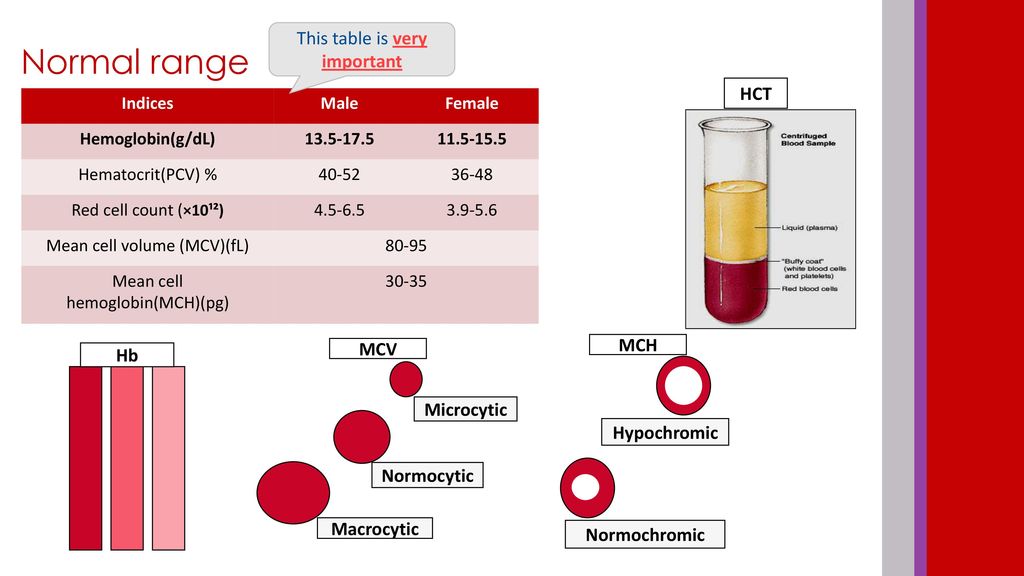 Thus, it is important to calculate the corrected reticulocyte count when evaluating a patient with macrocytic anemia. In hypoproliferative macrocytic anemia, the corrected reticulocyte count is <2%, and the MCV is greater than 100 fl. But, if the reticulocyte count is > 2%, hemolytic anemia should be considered.
Thus, it is important to calculate the corrected reticulocyte count when evaluating a patient with macrocytic anemia. In hypoproliferative macrocytic anemia, the corrected reticulocyte count is <2%, and the MCV is greater than 100 fl. But, if the reticulocyte count is > 2%, hemolytic anemia should be considered.
3) Hypoproliferative Macrocytic Anemia (MCV>100 fL)
Alcohol
Liver disease
Hypothyroidism
Folate and Vitamin B12 deficiency [3]
- Myelodysplastic syndrome (MDS)
Refractory anemia (RA)
Refractory anemia with ringed sideroblasts (RA-RS)
Refractory anemia with excess blasts (RA-EB)
Refractory anemia with excess blasts in transformation
Chronic myelomonocytic leukemia (CMML)
- Drug-induced
Diuretics
Chemotherapeutic agents
Hypoglycemic agents
Antiretroviral agents
Antimicrobials
Anticonvulsants
4) Hemolytic anemiaHemolytic anemia (HA) is divided into extravascular and intravascular causes.
- Extravascular hemolysis: red cells are prematurely removed from the circulation by the liver and spleen. This accounts for a majority of cases of HA
Hemoglobinopathies (sickle cell, thalassemias)
Enzyemopathies (G6PD deficiency, pyruvate kinase deficiency)
Membrane defects (hereditary spherocytosis, hereditary elliptocytosis)
Drug-induced
- Intravascular hemolysis: red cells lyse within the circulation, and is less common.
Epidemiology
Anemia is an extremely common disease affecting up to one-third of the global population. In many cases, it is mild and asymptomatic and requires no management.
The prevalence increases with age and is more common in women of reproductive age, pregnant women, and the elderly.
The prevalence is more than 20% of individuals who are older than the age of 85. The incidence of anemia is 50%-60% in the nursing home population.+measures+how+much+space+in+the+blood+is+occupied+by+red+blood+cells..jpg) In the elderly, approximately one-third of patients have a nutritional deficiency as the cause of anemia, such as iron, folate, and vitamin B12 deficiency. In another one-third of patients, there is evidence of renal failure or chronic inflammation. [4]
In the elderly, approximately one-third of patients have a nutritional deficiency as the cause of anemia, such as iron, folate, and vitamin B12 deficiency. In another one-third of patients, there is evidence of renal failure or chronic inflammation. [4]
Classically, mild iron-deficiency anemia is seen in women of childbearing age, usually due to poor dietary intake of iron and monthly loss with the menstrual cycles. Anemia is also common in elderly patients, often due to poor nutrition, especially of iron and folic acid. Other at-risk groups include alcoholics, the homeless population, and those experiencing neglect or abuse.
New-onset anemia, especially in those over 55 years of age, needs investigating and should be considered cancer until proven otherwise. This is especially true in men of any age who present with anemia.
Apart from age and sex, the race is also an important determinant of anemia, with the prevalence increasing in the African American population.
Pathophysiology
The pathophysiology of anemia varies greatly depending on the primary cause. For instance, in acute hemorrhagic anemia, it is the restoration of blood volume with intracellular and extracellular fluid that dilutes the remaining red blood cells (RBCs), which results in anemia. A proportionate reduction in both plasma and red cells results in falsely normal hemoglobin and hematocrit.
For instance, in acute hemorrhagic anemia, it is the restoration of blood volume with intracellular and extracellular fluid that dilutes the remaining red blood cells (RBCs), which results in anemia. A proportionate reduction in both plasma and red cells results in falsely normal hemoglobin and hematocrit.
RBC are produced in the bone marrow and released into circulation. Approximately 1% of RBC are removed from circulation per day. Imbalance in production to removal or destruction of RBC leads to anemia. [5]
The main mechanisms involved in anemia are listed below:
1. Increased RBC destruction
- Blood loss
Acute- hemorrhage, surgery, trauma, menorrhagia
Chronic- heavy menstrual bleeding, chronic gastrointestinal blood losses [6] (in the setting of hookworm infestation, ulcers, etc.), urinary losses (BPH, renal carcinoma, schistosomiasis)
- Hemolytic anemia
Acquired- immune-mediated, infection, microangiopathic, blood transfusion-related, and secondary to hypersplenism
Hereditary- enzymopathies, disorders of hemoglobin (sickle cell), defects in red blood cell metabolism (G6PD deficiency, pyruvate kinase deficiency), defects in red blood cell membrane production (hereditary spherocytosis and elliptocytosis)
2. Deficient/defective erythropoiesis
Deficient/defective erythropoiesis
Microcytic
Normocytic, normochromic
Macrocytic
History and Physical
A thorough history and physical must be performed.
Some important questions to obtain in a history:
Obvious bleeding- per rectum or heavy menstrual bleeding, black tarry stools, hemorrhoids
Thorough dietary history
Consumption of nonfood substances
Bulky or fatty stools with foul odor to suggest malabsorption
Thorough surgical history, with a concentration on abdominal and gastric surgeries
Family history of hemoglobinopathies, cancer, bleeding disorders
Careful attention to the medications taken daily
1) Symptoms of anemia
Classically depends on the rate of blood loss. Symptoms usually include the following:
Weakness
Tiredness
Lethargy
Restless legs
Shortness of breath, especially on exertion, near syncope
Chest pain and reduced exercise tolerance- with more severe anemia
Pica- desire to eat unusual and nondietary substances
Mild anemia may otherwise be asymptomatic
2) Signs of anemia
Skin may be cool to touch
Tachypnea
Hypotension (orthostatic)
- HEENT:
Pallor of the conjunctiva
“Boxcars” or “sausaging” of retinal veins: suggestive of hyperviscosity which can be seen in myelofibrosis
Jaundice- elevated bilirubin is seen in several hemoglobinopathies, liver diseases and other forms of hemolysis
Lymphadenopathy: suggestive of lymphoma or leukemia
Glossitis (inflammation of the tongue) and cheilitis (swollen patches on the corners of the mouth): iron/folate deficiency, alcoholism, pernicious anemia
- Abdominal exam:
Splenomegaly: hemolysis, lymphoma, leukemia, myelofibrosis
Hepatomegaly: alcohol, myelofibrosis
Scar from gastrectomy: decreased absorptive surface with the loss of the terminal ileum leads to vitamin B12 deficiency
Scar from cholecystectomy: Cholesterol and pigmented gallstones are commonly seen in sickle cell anemia are hereditary spherocytosis
- Cardiovascular:
Tachycardia
Systolic flow murmur
Severe anemia may lead to high output heart failure
Neurologic exam: Decreased proprioception/vibration: vitamin B12 deficiency
- Skin:
Pallor of the mucous membranes/nail bed or palmar creases: suggests hemoglobin < 9 mg/dL
Petechiae: thrombocytopenia, vasculitis
Dermatitis herpetiformis (in iron deficiency due to malabsorption- Celiac disease)
Koilonychia (spooning of the nails): iron deficiency
Rectal and pelvic exam: These examinations are usually overlooked and underperformed in the evaluation of anemia.
 If a patient has heavy rectal bleeding, one must evaluate for the presence of hemorrhoids or hard masses that suggest neoplasm as causes of bleeding.
If a patient has heavy rectal bleeding, one must evaluate for the presence of hemorrhoids or hard masses that suggest neoplasm as causes of bleeding.
Evaluation
Approach to anemia includes identification of the type of anemia: [7][8]
1. Complete blood count (CBC) including differential
2. Calculate the corrected reticulocyte count = percent reticulocytes x (patient’s HCT/normal HCT)
For normal HCT, use 45% in men and 40% in women
If result > 2, this suggests hemolysis or acute blood loss, while results < 2 suggests hypoproliferation.
3. After calculating the reticulocyte count, check the MCV.
- MCV (<80 fl)
Iron deficiency- decreased serum iron, percent saturation of iron, with increased total iron-binding capacity (TIBC), transferrin levels, and soluble transferrin receptor
Lead poisoning- basophilic stippling on the peripheral blood smear, ringed sideroblasts in bone marrow, elevated lead levels
AOCD- may be normocytic
Thalassemia- RBC count may be normal/high, low MCV, target cells, and basophilic stippling are on peripheral smear.
 Alpha thalassemia is differentiated from beta-thalassemia by a normal Hgb electrophoresis in alpha thalassemia. Elevated Hgb A2/HgbF is seen in the beta-thalassemia trait.
Alpha thalassemia is differentiated from beta-thalassemia by a normal Hgb electrophoresis in alpha thalassemia. Elevated Hgb A2/HgbF is seen in the beta-thalassemia trait.Sideroblastic anemia- elevated serum iron and transferrin with ringed sideroblasts in the bone marrow
- MCV (90-100fl)
Renal failure: BUN/Creatinine
Aplastic anemia- ask for drug exposure, check for infections (EBV, hepatitis, CMV, HIV), test for hematologic malignancies and paroxysmal nocturnal hemoglobinuria (PNH)
Myelofibrosis/myelophthisis- check bone marrow biopsy
Multiple myeloma- serum and urine electrophoresis
Pure red cell aplasia- test for Parvovirus B19, exclude thymoma
- MCV (>100 fl)
B12/folate levels- B12 and folate deficiency can be differentiated by an elevated methylmalonic and homocysteine level in B12 deficiency and only an elevated homocysteine level in folate deficiency.
 Methylmalonic levels are relatively normal.
Methylmalonic levels are relatively normal. MDS- hyposegmented PMNs on peripheral smear, bone marrow biopsy
Hypothyroidism- TSH, free T4
Liver disease- check liver function
Alcohol- assess alcohol intake
Drugs
Steps to evaluate for hemolytic anemia
1) Confirm the presence of hemolysis- elevated LDH, corrected reticulocyte count >2%, elevated indirect bilirubin and decreased/low haptoglobin
2) Determine extra vs. intravascular hemolysis-
3) Examine the peripheral blood smear [9]
Spherocytes: immune hemolytic anemia (Direct antiglobulin test DAT+) vs. hereditary spherocytosis (DAT-)
Bite cells: G6PD deficiency
Target cells: hemoglobinopathy or liver disease
Schistocytes: TTP/HUS, DIC, prosthetic valve, malignant HTN
Acanthocytes: liver disease
Parasitic inclusions: malaria, babesiosis, bartonellosis
4) If spherocytes +, check if DAT is +
DAT(+): Immune hemolytic anemia (AIHA)
DAT (-): Hereditary spherocytosis
Other investigations that might be warranted include esophagogastroduodenoscopy for the determination of an upper GI bleed, colonoscopy for the determination of a lower GI bleed, and imaging studies if malignancy, or internal hemorrhage is suspected. If a menstruating woman has heavy vaginal bleeding, evaluate the presence of fibroids with a pelvic ultrasound.
If a menstruating woman has heavy vaginal bleeding, evaluate the presence of fibroids with a pelvic ultrasound.
Treatment / Management
Management depends primarily on treating the underlying cause of anemia.
1) Anemia due to acute blood loss- Treat with IV fluids, crossmatched packed red blood cells, oxygen. Always remember to obtain at least two large-bore IV lines for the administration of fluid and blood products. Maintain hemoglobin of > 7 g/dL in a majority of patients. Those with cardiovascular disease require a higher hemoglobin goal of > 8 g/dL.
2) Anemia due to nutritional deficiencies: Oral/IV iron, B12, and folate.
Oral supplementation of iron is by far the most common method of iron repletion. The dose of iron administered depends on the patient’s age, calculated iron deficit, the rate of correction required, and the ability to tolerate side effects. The most common side effects include metallic taste and gastrointestinal side effects such as constipation and black tarry stools.
 For such individuals, they are advised to take oral iron every other day, in order to aid in improved GI absorption. The hemoglobin will usually normalize in 6-8 weeks, with an increase in reticulocyte count in just 7-10 days.
For such individuals, they are advised to take oral iron every other day, in order to aid in improved GI absorption. The hemoglobin will usually normalize in 6-8 weeks, with an increase in reticulocyte count in just 7-10 days. IV iron may be beneficial in patients requiring a rapid increase in levels. Patients with acute and ongoing blood loss or patients with intolerable side effects are candidates for IV iron.
3) Anemia due to defects in the bone marrow and stem cells: Conditions such as aplastic anemia require bone marrow transplantation.
4) Anemia due to chronic disease: Anemia in the setting of renal failure, responds to erythropoietin. Autoimmune and rheumatological conditions causing anemia require treatment of the underlying disease.
5) Anemia due to increased red blood cell destruction:
Hemolytic anemia caused by faulty mechanical valves will need replacement.
Hemolytic anemia due to medications requires the removal of the offending drug.

Persistent hemolytic anemia requires splenectomy.
Hemoglobinopathies such as sickle anemia require blood transfusions, exchange transfusions, and even hydroxyurea to decrease the incidence of sickling.
DIC, which is characterized by uncontrolled coagulation and thrombosis, requires the removal of the offending stimulus. Patients with life-threatening bleeding require the use of antifibrinolytic agents.
Differential Diagnosis
Hemolysis during phlebotomy and significant hemodilution due to large volume fluid resuscitation may lead to a falsely low red cell count.
In acute blood loss from trauma, anemia may not immediately be present on laboratory testing, as the fluid shifts have not had time to occur to normalize the circulating volume, thus diluting the number of red blood cells remaining
Anemia of chronic disease: consider renal failure, underlying malignancies, and autoimmune conditions
Bone marrow infiltration: consider in a patient with weight loss, fatigue.
Macrocytic anemia with B12/folate deficiency: consider in a patient with paresthesias, vegans/vegetarians or in patients with recent gastric bypass surgeries
Hemolytic anemia: consider in all patients with jaundice, dark urine. Always question the recent use of medications.
Acute upper or lower GI bleed: trauma, carcinoma, peptic ulcer disease, use of NSAIDs.
Prognosis
The prognosis for anemia depends on the cause of anemia.
Nutritional replacements of (iron, B12, folate) should begin immediately. In iron deficiency, replacements must continue for at least three months after the normalization of iron levels, in order to restore iron stores. Usually, nutritional deficiencies have a good prognosis if treated early and adequately.
Anemia, due to acute blood loss, if treated and stopped early, has a good prognosis.
Complications
Anemia, if undiagnosed or left untreated for a prolonged period of time can lead to multiorgan failure and can even death.
Pregnant women with anemia can go into premature labor and give birth to babies with low birth weight [10]. Anemia during pregnancy also increases the risk of anemia in the baby and increased blood loss during pregnancy.
Complications are more predominant in the older population due to multiple comorbidities [11]. The cardiovascular system is the most commonly affected in chronic anemia. Myocardial infarction, angina, and high output heart failure are common complications. Other cardiac complications include the development of arrhythmias and cardiac hypertrophy.
Severe iron deficiency is associated with restless leg syndrome and esophageal webs.
Severe anemia from a young age may lead to impaired neurological development in the form of cognitive, mental, and developmental delays. These complications are unlikely to be amenable to medical management.
Consultations
Gastroenterologist if a gastrointestinal bleed is suspected
Nephrologist if anemia of chronic disease in the setting of renal failure is suspected
Hematologist if a bone marrow disorder is suspected
Gynecologist if intractable menorrhagia is suspected
Cardiologist if severe anemia leads to angina, myocardial infarction, heart failure, or arrhythmias
Deterrence and Patient Education
Patients with nutritional anemia due to iron deficiency should be educated on food which is rich in iron. Foods such as green leafy vegetables, tofu, red meats, raisins, and dates contain a lot of iron. Vitamin C helps to increase dietary iron absorption. Patients must be advised to avoid excess tea or coffee, as these can decrease iron absorption. Patients on oral iron supplementation must be educated that there is an increased risk of constipation and of the risk of passing black tarry stools. Patients must be advised to contact their doctor if there is severe intolerance to oral iron, as they may be candidates for IV iron supplementation.
Foods such as green leafy vegetables, tofu, red meats, raisins, and dates contain a lot of iron. Vitamin C helps to increase dietary iron absorption. Patients must be advised to avoid excess tea or coffee, as these can decrease iron absorption. Patients on oral iron supplementation must be educated that there is an increased risk of constipation and of the risk of passing black tarry stools. Patients must be advised to contact their doctor if there is severe intolerance to oral iron, as they may be candidates for IV iron supplementation.
Vegan and vegetarian patients, who may be deficient in B12 must be advised to consume food fortified with vitamin B12, such as certain plant and soy products. Patients who had gastric sleeve operations and sleeve gastrectomies are at an increased risk of vitamin B12 and folate deficiency, due to the loss of absorptive surface at the terminal ileum.
Pearls and Other Issues
Always send blood films in patients with an unclear etiology of anemia.
Start haematinics early (iron, B12, and folate).
Inform patients of the side effects of iron therapy, including constipation and black, tarry stools.
Consider screening for sickle cell and thalassemia in patients with unexplained anemia or with a family history of these diseases.
Vitamin C aids iron absorption, so coadministration of vitamin C with iron, or encouraging the patients to take iron supplements with orange juice, will aid therapy.
Enhancing Healthcare Team Outcomes
Anemia is a heterogeneous condition caused by a variety of diseases. Identifying the cause of anemia and treating it appropriately is very crucial in the management of anemia. This requires interprofessional teamwork between the patient, the patient’s primary care provider, and consultant physician based on the cause, such as a gastroenterologist, nephrologist, cardiologist, hematologist, or gynecologist. Taking all necessary medications along with lifestyle modifications and frequent follow up with the team of doctors is essential to prevent the development of complications. Pharmacists provide education to patients about compliance and side effects of medication, as well as checking for drug interactions. Nurses assist with the education of patients and arrange followup laboratory evaluations and appointments. Only with collaborative interprofessional care can anemia cases achieve optimal outcomes. [Level 5]
Pharmacists provide education to patients about compliance and side effects of medication, as well as checking for drug interactions. Nurses assist with the education of patients and arrange followup laboratory evaluations and appointments. Only with collaborative interprofessional care can anemia cases achieve optimal outcomes. [Level 5]
Review Questions
Access free multiple choice questions on this topic.
Comment on this article.
Figure
Aplastic anemia bone marrow. Contributed by Ruozhi Xiao
Figure
Macrocytic anemia. Contributed by Ruozhi Xiao via SlideShare, “Anemia Overview,”
Figure
Iron deficiency anemia. Image courtesy S Bhimji MD
Figure
Sideroblastic anemia. Image courtesy S Bhimji MD
Figure
Hypochromic microcytic anemia. Image courtesy S Bhimji MD
References
- 1.
Usuki K. [Anemia: From Basic Knowledge to Up-to-Date Treatment. Topic: IV.
 Hemolytic anemia: Diagnosis and treatment]. Nihon Naika Gakkai Zasshi. 2015 Jul 10;104(7):1389-96. [PubMed: 26513958]
Hemolytic anemia: Diagnosis and treatment]. Nihon Naika Gakkai Zasshi. 2015 Jul 10;104(7):1389-96. [PubMed: 26513958]- 2.
Bottomley SS, Fleming MD. Sideroblastic anemia: diagnosis and management. Hematol Oncol Clin North Am. 2014 Aug;28(4):653-70, v. [PubMed: 25064706]
- 3.
Engebretsen KV, Blom-Høgestøl IK, Hewitt S, Risstad H, Moum B, Kristinsson JA, Mala T. Anemia following Roux-en-Y gastric bypass for morbid obesity; a 5-year follow-up study. Scand J Gastroenterol. 2018 Aug;53(8):917-922. [PubMed: 30231804]
- 4.
Patel KV. Epidemiology of anemia in older adults. Semin Hematol. 2008 Oct;45(4):210-7. [PMC free article: PMC2572827] [PubMed: 18809090]
- 5.
Badireddy M, Baradhi KM. StatPearls [Internet]. StatPearls Publishing; Treasure Island (FL): Aug 8, 2022. Chronic Anemia. [PubMed: 30521224]
- 6.
Amin SK, Antunes C. StatPearls [Internet]. StatPearls Publishing; Treasure Island (FL): Jul 18, 2022.
 Lower Gastrointestinal Bleeding. [PubMed: 28846221]
Lower Gastrointestinal Bleeding. [PubMed: 28846221]- 7.
Jamwal M, Sharma P, Das R. Laboratory Approach to Hemolytic Anemia. Indian J Pediatr. 2020 Jan;87(1):66-74. [PubMed: 31823208]
- 8.
Mumford J, Flanagan B, Keber B, Lam L. Hematologic Conditions: Platelet Disorders. FP Essent. 2019 Oct;485:32-43. [PubMed: 31613566]
- 9.
Rashid A. A 65-year-old man with anemia: diagnosis with peripheral blood smear. Blood Res. 2015 Sep;50(3):129. [PMC free article: PMC4595576] [PubMed: 26457277]
- 10.
O’Farrill-Santoscoy F, O’Farrill-Cadena M, Fragoso-Morales LE. [Evaluation of treatment of iron deficiency anemia in pregnancy]. Ginecol Obstet Mex. 2013 Jul;81(7):377-81. [PubMed: 23971384]
- 11.
Triscott JA, Dobbs BM, McKay RM, Babenko O, Triscott E. Prevalence and Types of Anemia and Associations with Functional Decline in Geriatric Inpatients. J Frailty Aging. 2015;4(1):7-12. [PubMed: 27031910]
Disclosure: Jake Turner declares no relevant financial relationships with ineligible companies.

Disclosure: Meghana Parsi declares no relevant financial relationships with ineligible companies.
Disclosure: Madhu Badireddy declares no relevant financial relationships with ineligible companies.
10 Symptoms of Anemia You Shouldn’t Ignore
in Family Medicine
July 24, 2020
Tagged With: Anemia Diagnosis, Anemia Symptoms, Anemia treatment Fort Worth TX, Anemia treatment near me, Chest Pains, Cold Hands and Feet, Fatigue, Hypothyroidism
Anemia is a common blood disorder affecting more than 1.6 billion people worldwide. It occurs when the number of healthy red blood cells that carry oxygen through the body drops to an abnormal level, or if the cells don’t contain enough hemoglobin.
The majority of the approximately 3.5 million Americans with anemia become anemic over time through inadequate iron (microcytic anemia) or low vitamin B-12 levels (pernicious anemia). Both of these, along with folate (a B-9 vitamin), is necessary for the production of healthy red blood cells.
Those who are most susceptible to anemia are children, females with menorrhagia (heavy menstrual bleeding), and pregnant women. People who suffer chronic diseases like ulcers, or people who have recently undergone surgery, may also become anemic. People with African ancestry are especially susceptible to sickle cell anemia, in which the red blood cells are curved like sickles.
Common Anemia Symptoms
1. Breathing Issues, Dizziness, and Headaches
When you’re healthy, abundant oxygen is conveyed to the heart, muscles, and organs. With anemia, the lungs overcompensate in order to bring in more oxygen, causing breathing difficulties.
Low levels of hemoglobin prevent adequate oxygen from reaching the brain. Blood vessels swell, blood pressure drops, and it can result in headaches, neurological issues, and vertigo.
Small exertions can cause shortness of breath or fainting spells.
2. Chest Pains and Palpitations
A rapid heartbeat and palpitations along with feelings of anxiety (due to a deprived sympathetic nervous system) may be connected to a lack of oxygen in the blood.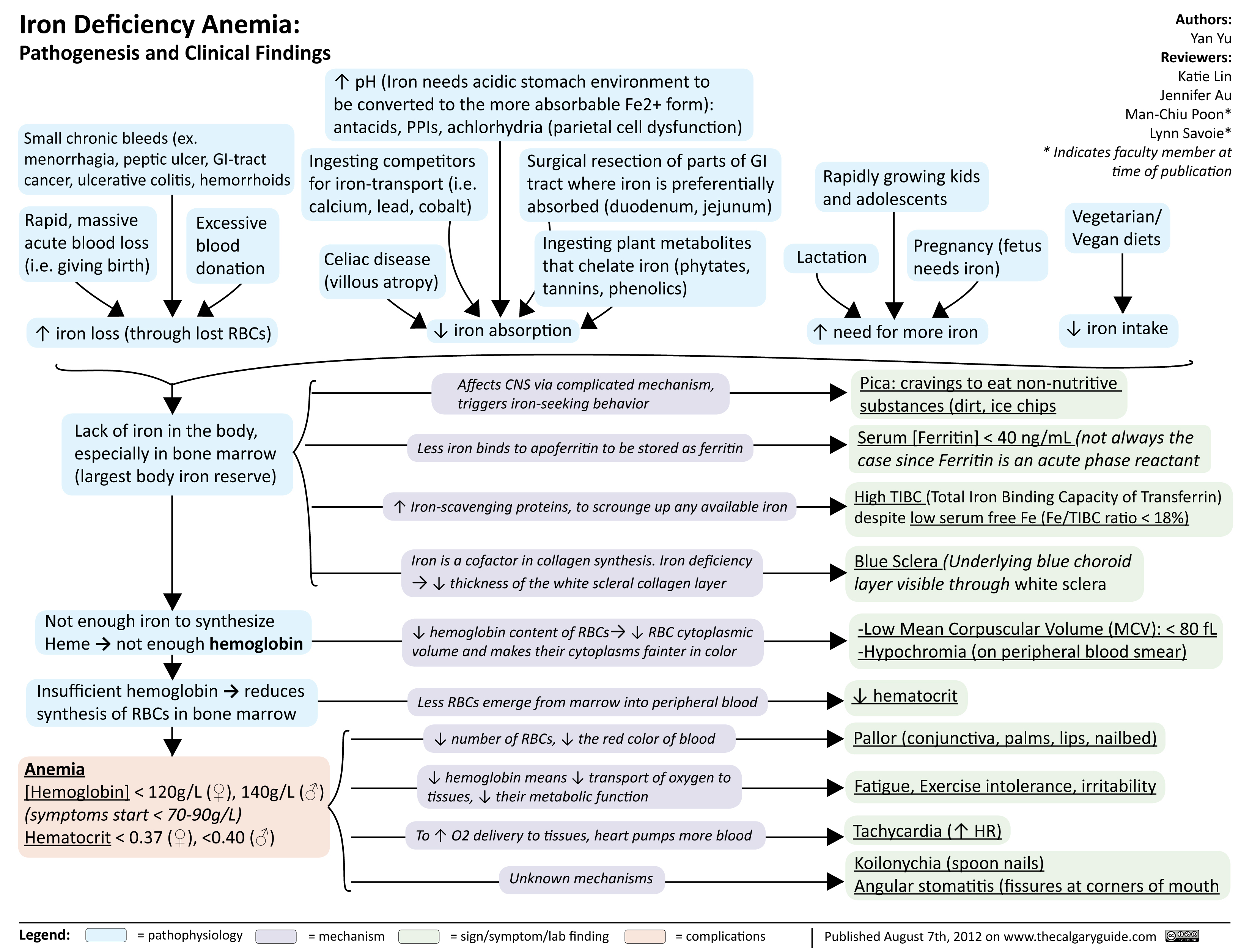
A consistently rapid heart rate is not good for your heart or for the rest of your body. When there’s a low level of oxygen in the blood, the heart works extra hard to compensate. This puts a lot of pressure on the heart, which can cause it to beat faster, irregularly, and experience pain.
Untreated anemia can exacerbate underlying cardiovascular issues. Extreme cases can lead to an enlarged heart, heart murmurs, or even heart failure.
3. Cold Hands and Feet
Anemia sufferers often experience cold hands and feet even in warm weather because of poor circulation. Less blood is delivered to the limbs, leaving them feeling cold.
4. Cramping and Tingling in Limbs
The large leg muscles require a lot of blood and oxygen to function. Oxygen deprivation causes them to work overtime and cause fatigue, weakness, severe cramps, and restless leg syndrome (RLS), which may contribute to insomnia.
Anemic patients may feel a crawling or itchy sensation in the feet and legs, which can worsen at night.
5. Fatigue
Tiring easily, and waking up tired even after a good night’s sleep, are common and potentially serious symptoms of anemia. This is due to reduced and compromised red blood cells that naturally cannot carry the required levels of oxygen to the organs – which, in turn, cannot function efficiently.
This causes abnormal exhaustion, lethargy, and weakness.
6. Hypothyroidism
Anemia is often an early sign of hypothyroidism. Feelings of exhaustion, accompanied by weight gain and lower body temperature, could all be symptoms of an underactive thyroid – which tends to occur alongside iron deficiency anemia.
7. Iron and Vitamin B-12 Deficiency
Without enough iron or vitamin B-12 consumption, the body cannot produce enough of the protein called hemoglobin – which is crucial to the functioning of red blood cells. Hemoglobin is rich in iron, which is what gives blood its red color.
Hemoglobin allows oxygen to bond to the cells so they can carry it in the bloodstream throughout the body.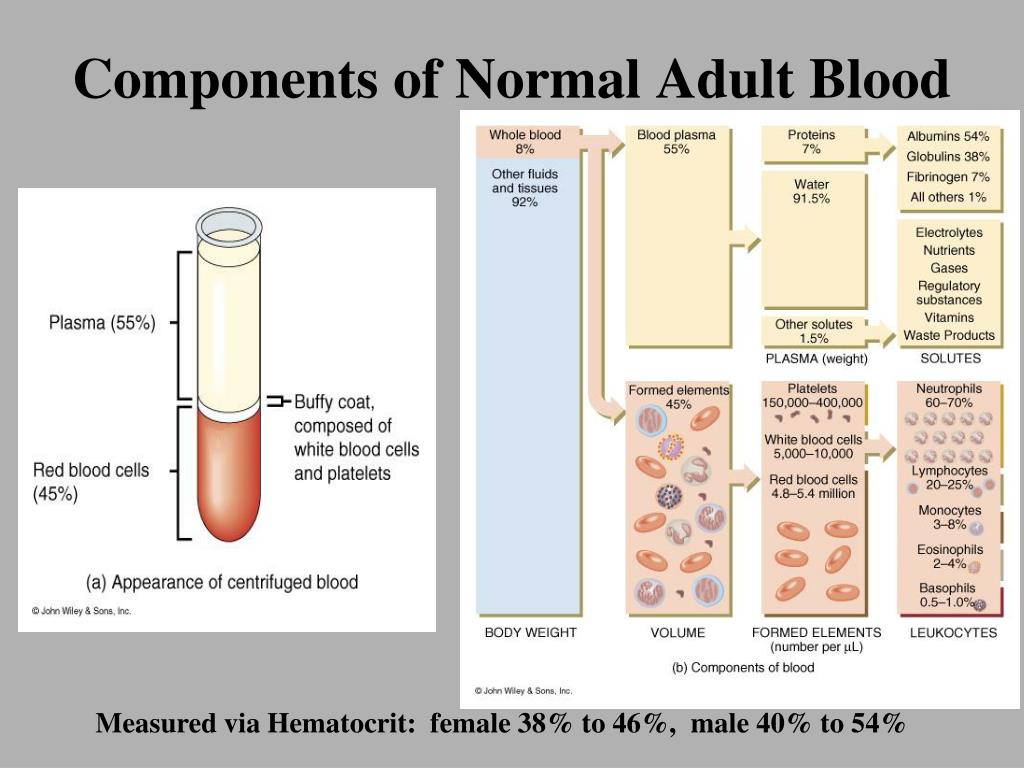 When there aren’t enough iron or vitamin B-12, some parts of the body will not receive the necessary oxygen.
When there aren’t enough iron or vitamin B-12, some parts of the body will not receive the necessary oxygen.
8. Unusually Pale Complexion and Nails
The skin is the largest organ in the human body. A healthy complexion has a glow, which is due to the capillaries under the skin that lend a pink touch.
With anemia, those capillaries lose red blood cells or function inefficiently and don’t have the natural pink tint. The skin may even take on a yellowish tone.
Therefore, pale skin is a common sign of anemia. It can be all over the body or limited to one area, such as the face, gums, or inside the lips or lower eyelids.
Likewise, fingernails that are all-white, yellowish, or thin may indicate anemia. Other signs can be abnormalities such as upwardly or inwardly curved nails, raised ridges, and brittleness. Your doctor will evaluate your symptoms and will likely perform tests.
9. Pica Syndrome
Anemia can also be characterized by pica, which is an intense craving for unusual, non-nutritional items, such as ice and baking soda. Pica can even cause cravings for non-food items like dirt, pottery shards, paper, and chalk!
Pica can even cause cravings for non-food items like dirt, pottery shards, paper, and chalk!
The most likely explanation for pica is that the body is trying to make up for its iron deficiency.
10. Problems with Focusing
Inadequate oxygenation of internal organs causes the diminishing of physical and mental energy levels. This causes distraction and an inability to focus even on simple tasks.
Who Can Help Treat My Anemia?
Fortunately, anemia is treatable under proper medical supervision. If you’re experiencing some of these symptoms and think that you might be anemic, the medical team at Texas Medical Institute can help.
If you have any questions about our clinic or would like to schedule an appointment, contact us today by calling (817) 615-8633, or request an appointment now via our online form. We look forward to helping you enjoy ultimate health and wellness!
Erythropoietin – hormone (glycoprotein) – get tested in St. Petersburg
Erythropoietin is a hormone produced by the kidneys in large quantities, but by the liver in small quantities. It controls the process of hematopoiesis – the formation of erythrocytes (red blood cells). According to its chemical composition, it is a two-component protein. In medicine, it is used as a drug, in sports as a doping.
It controls the process of hematopoiesis – the formation of erythrocytes (red blood cells). According to its chemical composition, it is a two-component protein. In medicine, it is used as a drug, in sports as a doping.
Physiological role of erythropoietin
The hormone activates mitosis (indirect cell division) and the maturation of red blood cells. An increase in the secretion of erythropoietin is caused by such conditions as blood loss, hypoxia, renal ischemia and anemic conditions of various anamnesis. For example, deficiency anemia with a lack of iron, vitamin B9 and B12, as well as anemia caused by damage to the bone marrow.
Erythropoietin begins to enter the bloodstream during hypoxia (oxygen starvation) because it stimulates the production of red blood cells. They, in turn, contain hemoglobin, which transports oxygen from the lungs to internal organs and tissues. Anemia develops when there is a violation of the ratio between the formation and natural death of red blood cells, when their number falls below normal. The production of the hormone depends on the physical capabilities of the kidneys and the degree of oxygen starvation. If the kidneys are damaged, their functionality is impaired, or the bone marrow does not respond to erythropoietin, anemia develops. You should know that anemia or, as it is also called, anemia is not a disease. This is a symptom inherent in diseases of the blood and some temporary conditions, such as pregnancy. At the same time, anemia is not the norm and requires adjustment.
The production of the hormone depends on the physical capabilities of the kidneys and the degree of oxygen starvation. If the kidneys are damaged, their functionality is impaired, or the bone marrow does not respond to erythropoietin, anemia develops. You should know that anemia or, as it is also called, anemia is not a disease. This is a symptom inherent in diseases of the blood and some temporary conditions, such as pregnancy. At the same time, anemia is not the norm and requires adjustment.
Excessive production of erythropoietin and, as a result, an increase in the level of red blood cells, also indicates pathological processes occurring in the body. These include tumors of the kidneys – more often, and other organs – less often. Neoplasm can be benign and malignant. As a result of negative changes, an excessively high number of red blood cells is formed. This leads to an increase in blood volume, it becomes more viscous, which in turn causes an increase in blood pressure.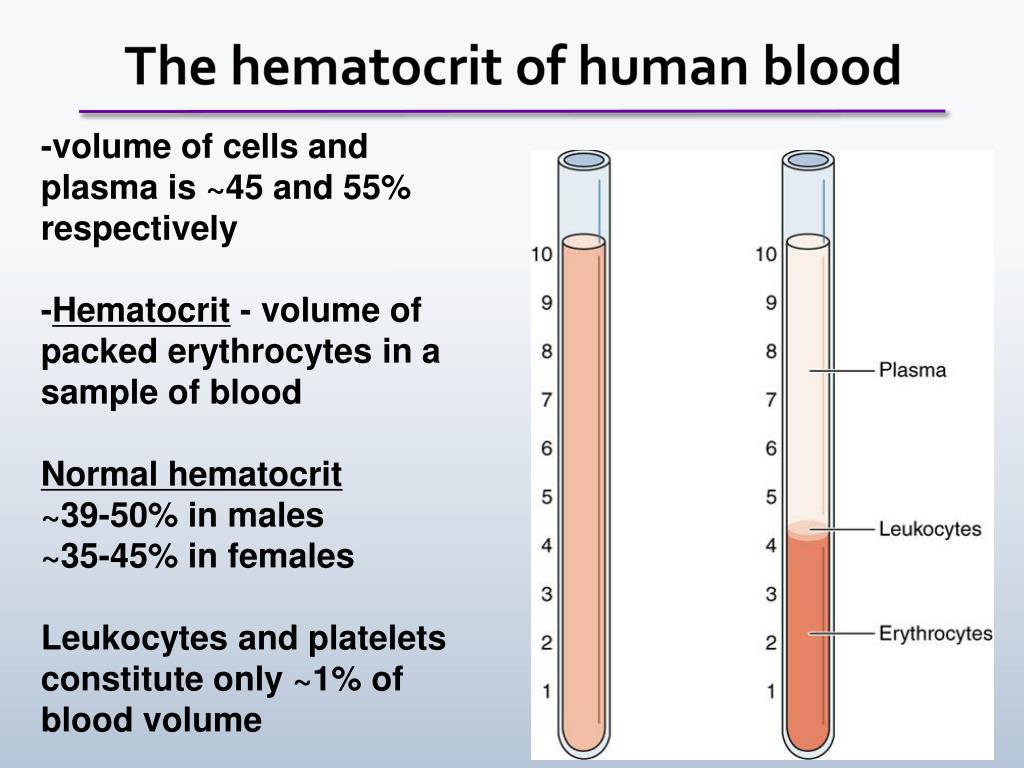
When is an erythropoietin test ordered?
A general practitioner, endocrinologist, oncologist, hematologist, nephrologist or surgeon can send for analysis. In most cases, it is prescribed after detecting abnormalities in the general blood test. The purpose of the study is to determine what caused anemia, low levels of erythropoietin or other reasons, as well as to establish the degree of its severity.
Among the most common reasons:
- Anemia of indeterminate nature, i.e. not due to lack of iron, vitamin B9and B12, destruction of red blood cells, blood loss.
- In a situation where the volume of erythrocytes, hemoglobin, hematocrit is reduced, while reticulocytes are normal or below the reference value.
- For health management in chronic renal failure.
- To distinguish between the causes of anemia caused by a lack of the hormone erythropoietin and resulting from bone marrow suppression.

Additionally, tests can be carried out on the level of red blood cells, hematocrit, hemoglobin, text on reticulocytes and red blood cell indices. The data obtained allow us to assess the performance of the kidneys, the ability to produce erythropoietin in sufficient volume. Analysis of erythropoietin also allows you to monitor the condition of patients with chronic renal failure.
Deciphering the results
Biological material: venous blood.
Reference values: from 4.3 to 29 mIU / ml.
1. An increase in erythropoietin is noted in such cases as:
- Anemia due to low hemoglobin.
- Diseases of the hematopoietic system.
- Abnormal premature breakdown of erythrocytes.
- Iron deficiency anemia.
- Hypoxia due to prolonged exposure to high altitude.
- Hypoxia due to lung disease.
- Oncological diseases of the bone marrow (myeloma, leukemia, lymphoma).

- Clonal heterogeneous diseases (bone marrow dysplasia, leukemia).
An increase in erythropoietin is also noted after chemotherapy and during pregnancy.
2. An abnormally high level of erythropoietin is noted in the following conditions:
- Polycystic kidney dysplasia.
- Benign neoplasms of the kidneys (pheochromocytoma, cyst).
- Malignant neoplasms (carcinoma, epithelium of the pelvicalyceal system).
- Tumors of other organs, arising independently or as a result of metastasis of renal cell carcinoma.
- Rejection in kidney transplant recipients.
3. A decrease in erythropoietin may indicate pathologies such as:
- Rheumatoid arthritis (inflammation of tissues of small joints).
- Multiple myeloma or Rusticki-Kahler disease (blood disease – paraproteinemic leukemia).
4. An abnormally low level of erythropoietin is noted in the following situations:
An abnormally low level of erythropoietin is noted in the following situations:
- Chronic renal failure.
- Polycythemia (blood viscosity, decreased blood flow, blood clots).
Extremely low levels are also observed within 3 to 4 weeks after bone marrow transplantation. However, it should grow steadily, and after the expiration of the specified period, reach the reference values.
How to prepare for analysis
Before taking blood for analysis for erythropoietin, you should stop eating for 8 hours. For a day, in agreement with the doctor, stop taking medications. An hour before the analysis, exclude physical activity, emotional stress, stop smoking. The best time for blood sampling is in the morning, when the rate is maximum. Pregnancy, taking steroids and hormonal drugs can affect the result. In this case, it will be overestimated. The level of erythropoietin decreases after blood transfusion and with an increase in blood plasma viscosity.
Synonyms: Erythropoietin/EPO blood test, Erythropoetin.
Equipment: Access/UniCel DxI/Beckman Coulter
It is recommended to donate blood in the morning, on an empty stomach (at least 8 hours and no more than 12 hours of fasting). Drinking – water, as usual. On the eve of the study, exclude: food, physical and emotional overload, alcohol and energy drinks. Stop smoking 1 hour before the study. Subject to daily fluctuations. It is advisable to take from 7.30 to 12.00.
Anemia in Germany, cost of treatment
Anemia in Germany, cost of treatment – MedClassic
Ask a question and within 24 hours you will receive an answer from a leading specialist in your disease about the method and cost of treatment. Prices on the site are calculated individually.
Anemia is the general name for the state of the body, characterized by a decrease in the concentration of hemoglobin, an insufficient content of functionally complete red blood cells.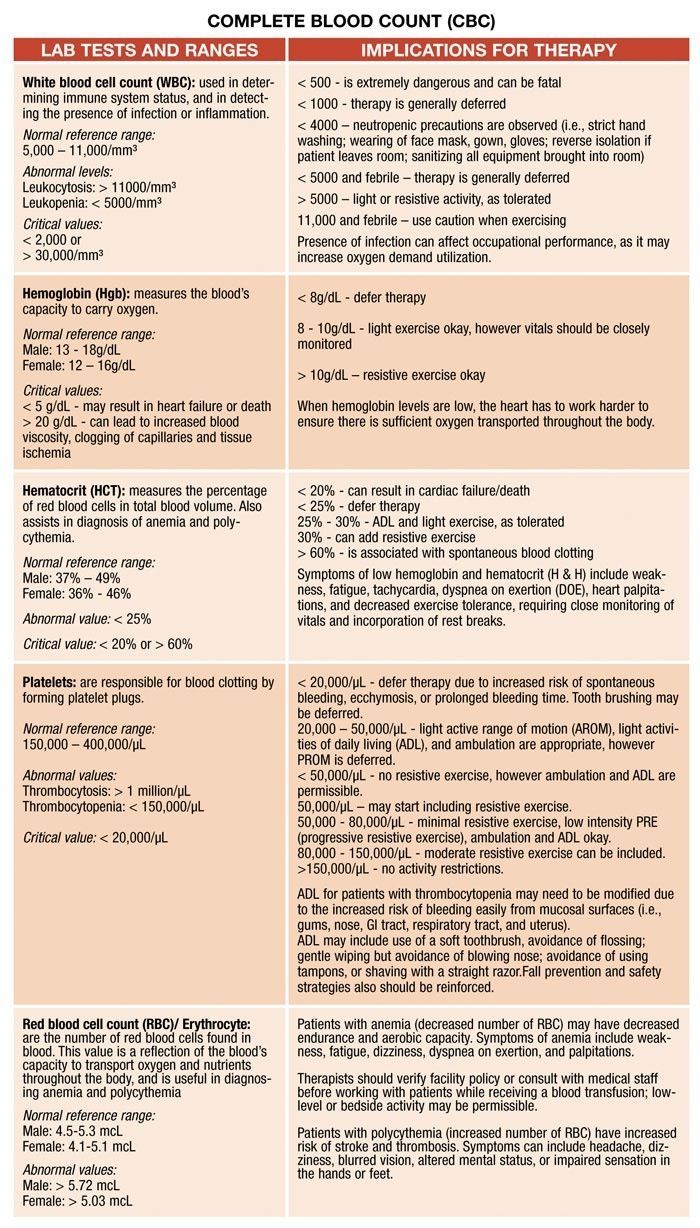
Blood consists of a liquid component (plasma) and three types of solid cell formations. Erythrocytes (red blood cells), thanks to which the blood is red (scarlet) in color, contribute to the transport of oxygen to the tissues. Leukocytes (white blood cells) provide immune (protective) properties of blood, platelets are responsible for blood clotting in case of mechanical damage to blood vessels.
Every tenth inhabitant of the planet is prone to various types of anemia, the vast majority of all anemias are associated with iron deficiency in the body.
Practice suggests the classification of anemia into:
1. Caused by acute blood loss.
2. The result of abnormal production of erythrocytes.
2.1.Iron deficiency.
2.2. Sideroblastic.
2.3. Aplastic.
2.4 Chronic.
2.5. Megaloblastic.
3. Due to increased destruction of red blood cells.
3.1. Hemolytic.
Symptoms of anemia are very pronounced, because caused by insufficient oxygen in the tissues. As a result of such oxygen starvation, blanching of the skin, increased heart rate, shortness of breath, dizziness, weakness appear throughout the body.
As a result of such oxygen starvation, blanching of the skin, increased heart rate, shortness of breath, dizziness, weakness appear throughout the body.
Treatment prices are calculated on an individual basis.
Apply for a free treatment
Diagnosis anemia in Germany – is a thorough examination of the body, designed to determine whether the disease is independent or derived from another disease. Depending on the decrease in hematocrit (less than 36% – in women, 39% – in men) and hemoglobin (an iron-containing pigment of erythrocytes) distinguish between the following stages of the disease:
- mild, hemoglobin less than 130g / l – in men and 120g / l – in women, but above 90g / l;
- medium, hemoglobin 70-90g/l;
- severe, hemoglobin less than 70g/l.
Diagnosis anemia in Germany – is a collection of many laboratory tests, supplemented by instrumental methods. The starting stage is the collection of anamnesis and physical examination. A detailed blood test shows various forms of erythrocytes, reticulocytes, the level of iron, transferrins, folic acid, vitamin B12 in the blood serum, ferritin, total iron-binding capacity, ECG to detect oxygen supply disorders of the heart muscles, other examinations up to a puncture of the red bone marrow to determine the reserve cells that produce blood cells. Special attention is paid by specialists to pregnant women, because. The health and development of the child directly depends on the state of the mother.
The starting stage is the collection of anamnesis and physical examination. A detailed blood test shows various forms of erythrocytes, reticulocytes, the level of iron, transferrins, folic acid, vitamin B12 in the blood serum, ferritin, total iron-binding capacity, ECG to detect oxygen supply disorders of the heart muscles, other examinations up to a puncture of the red bone marrow to determine the reserve cells that produce blood cells. Special attention is paid by specialists to pregnant women, because. The health and development of the child directly depends on the state of the mother.
Treatment
Treatment of anemia in Germany today provides almost 100% favorable outcome. Depending on the form and degree, a personal treatment regimen is developed, taking into account your susceptibility to medications. During the treatment you will receive advice on prevention and further strengthening of your health. The MedClassic team will help you find the best medical care for your situation, combined with the most comfortable conditions for your stay.

 If a patient has heavy rectal bleeding, one must evaluate for the presence of hemorrhoids or hard masses that suggest neoplasm as causes of bleeding.
If a patient has heavy rectal bleeding, one must evaluate for the presence of hemorrhoids or hard masses that suggest neoplasm as causes of bleeding. Alpha thalassemia is differentiated from beta-thalassemia by a normal Hgb electrophoresis in alpha thalassemia. Elevated Hgb A2/HgbF is seen in the beta-thalassemia trait.
Alpha thalassemia is differentiated from beta-thalassemia by a normal Hgb electrophoresis in alpha thalassemia. Elevated Hgb A2/HgbF is seen in the beta-thalassemia trait. Methylmalonic levels are relatively normal.
Methylmalonic levels are relatively normal. 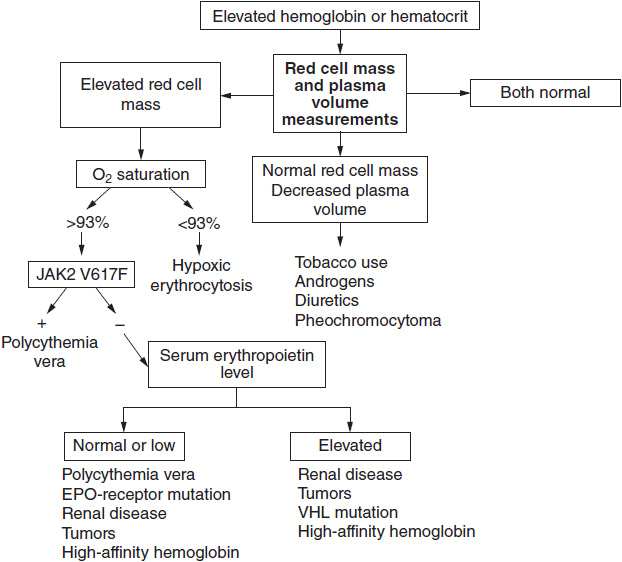 For such individuals, they are advised to take oral iron every other day, in order to aid in improved GI absorption. The hemoglobin will usually normalize in 6-8 weeks, with an increase in reticulocyte count in just 7-10 days.
For such individuals, they are advised to take oral iron every other day, in order to aid in improved GI absorption. The hemoglobin will usually normalize in 6-8 weeks, with an increase in reticulocyte count in just 7-10 days. 
 Hemolytic anemia: Diagnosis and treatment]. Nihon Naika Gakkai Zasshi. 2015 Jul 10;104(7):1389-96. [PubMed: 26513958]
Hemolytic anemia: Diagnosis and treatment]. Nihon Naika Gakkai Zasshi. 2015 Jul 10;104(7):1389-96. [PubMed: 26513958]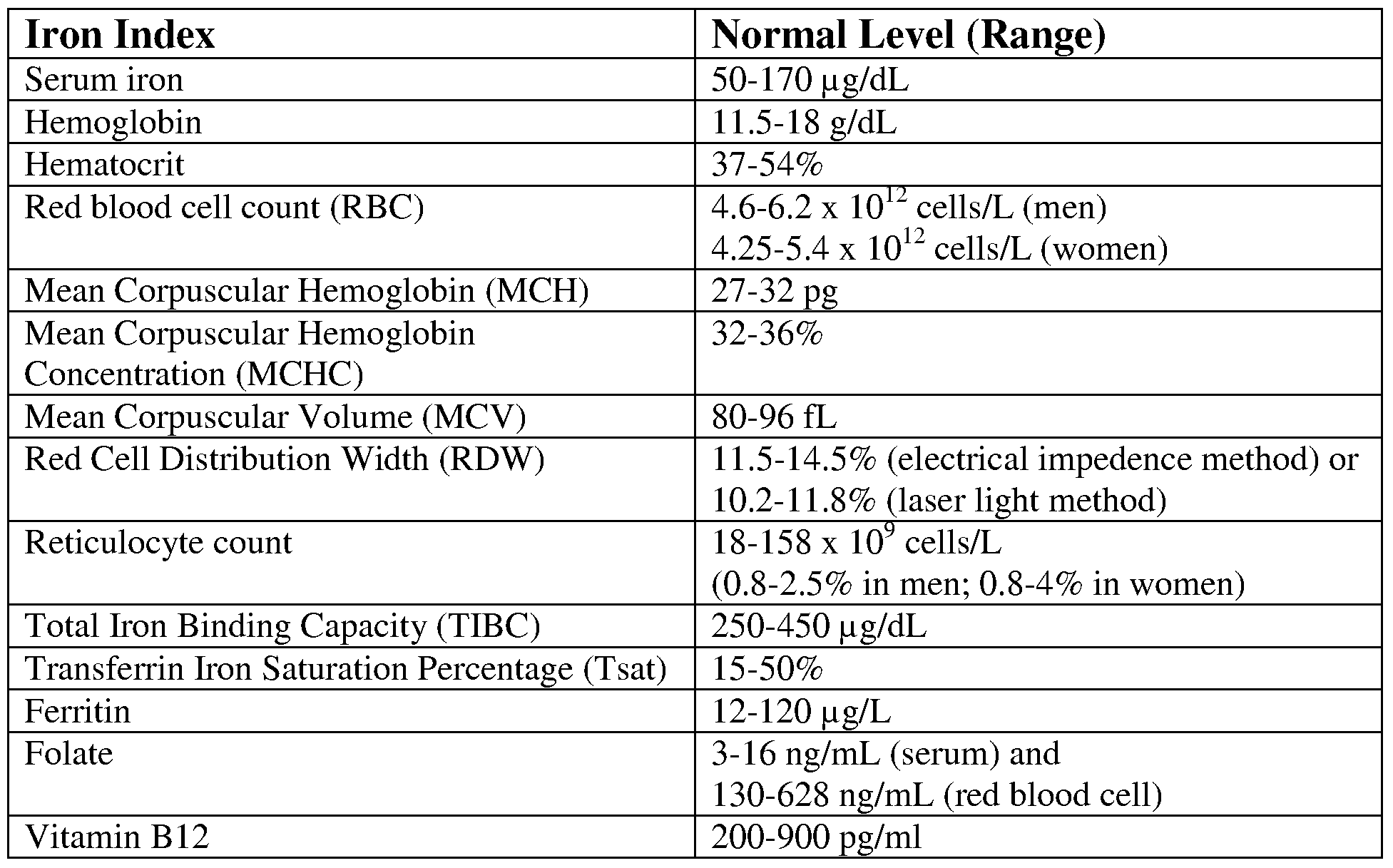 Lower Gastrointestinal Bleeding. [PubMed: 28846221]
Lower Gastrointestinal Bleeding. [PubMed: 28846221]
